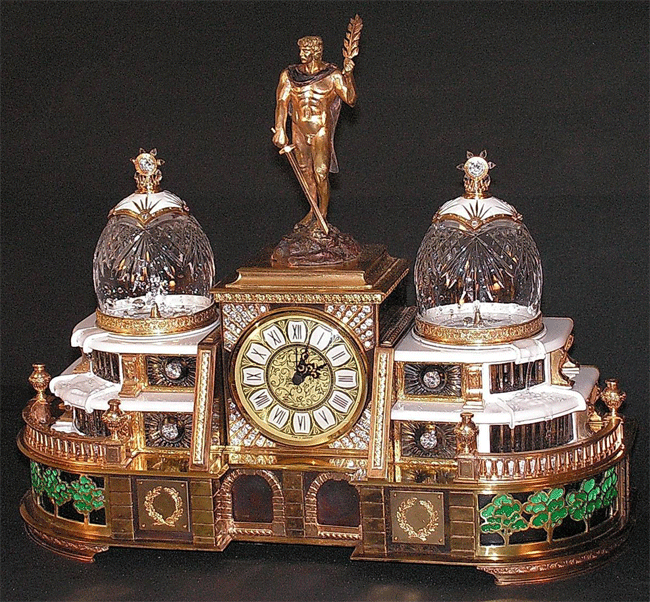Owened by the àuthor.
| 32,5 õ 12,0 õ, 27,5 cm | Bronze, brass, crystal, glass, zirconium, enamel |
Main components of the clock:
The Grand Palace of Peterhof was designed and built to commemorate the triumphant victory of the Russian army and navy over Sweden at the beginning of the 18th century. Without a doubt the dominant elements of the composition are the two cascading fountains, the appearance of which refer directly to the Petershof theme of the clock. The cascades are crowned by crystal covers ornamented at the top with enamelwork, crowns, zircons and Swarowski crystal chips. The covers provide the clock with the necessary protection from any water that might splash from the fountains. The water jets of the fountains are mounted in the middle of the basins under the covers. The water flows through channels in the lower metal holder under the covers into the upper level of the cascades, then down to the second level and finally into the lower pool. The majority of the clock’s decorative elements originate from the Peterhof theme; for example, the construction and colour range of the horizontal and vertical cascade walls, two grottos (clad in black mother-of-pearl), balustrades with vases (screening the slits for the cascades’ water drains), enamel trees symbolising the opulence of Peterhof. The pumps are operated by a special electronic unit which ensures a variety of functions: periodic, cyclical, and continuous water displays (for example, a two-minute water display at fifteen-minute intervals). |
|

|
|